Major project
Systemic Accident Analysis Methods for Healthcare: utility, usability and future application [Read more]
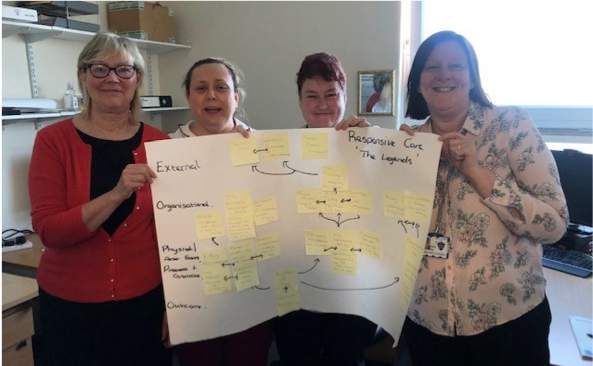
Fig.1 Patient Safety teams creating an AcciMap
NHS England is working with pilot sites to develop the Patient Safety Incident Response Framework (PSIRF) which will replace the current Serious Incident Framework and guide NHS Trusts on how and when to initiate Patient Safety Incident Investigations. Alongside the PSIRF, a national syllabus has been developed to ensure those undertaking investigations are trained in human factors, systems thinking and just culture. The syllabus contains no guidance or recommendations on which tools or methods to utilise.
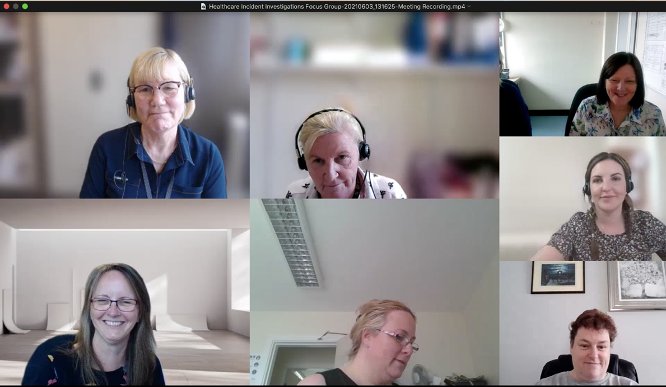
Fig.2 Focus group via Teams
The aim of this project was to identify and evaluate Systemic Accident Analysis tools that would be appropriate to be taught to and applied by Patient Safety Incident investigators undertaking investigations at a local Trust level. Participants were Lead Investigators or senior Patient Safety staff in an NHS Trust. They undertook training in AcciMap and Human Factors Analysis and Classification System (HFACS), applied each tool to a case study, and evaluated the tools for utility, usability and future application through an online questionnaire and focus group.
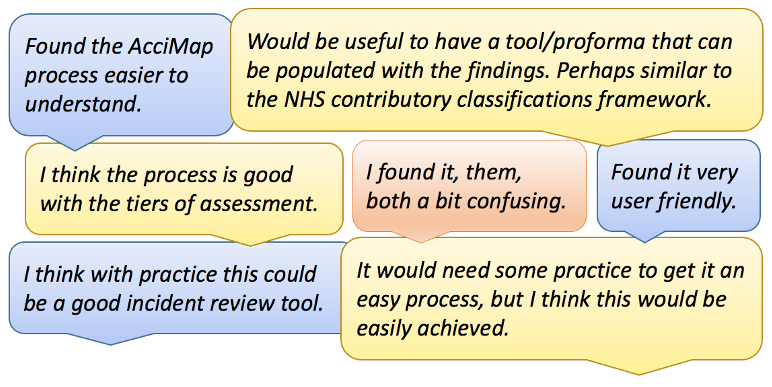
Fig.3 Ease of learning and ease of use
Most participants agreed the tools were suitable for analysing incidents and met the requirements of a systemic tool (utility). They thought the tools were easy to understand and easy to use, and they identified more contributory factors using the tools than they would have with other methods (usability).
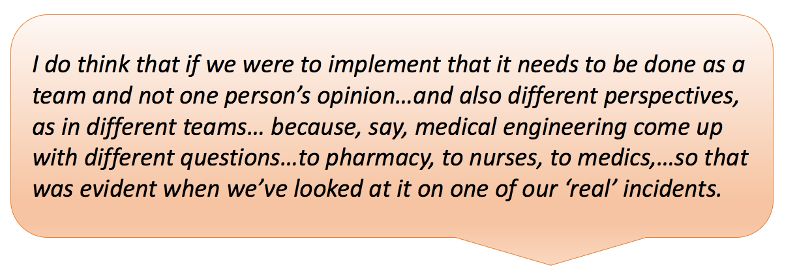
Fig.4 Team working and collaboration
Although they were asked to complete the analysis individually, a number of them joined together in small groups. They identified that this was beneficial to generating ideas and determining a consensus. All participants felt they could become skilled using the tools with additional training. Many of them planned to use the tools for their next investigation (future application).
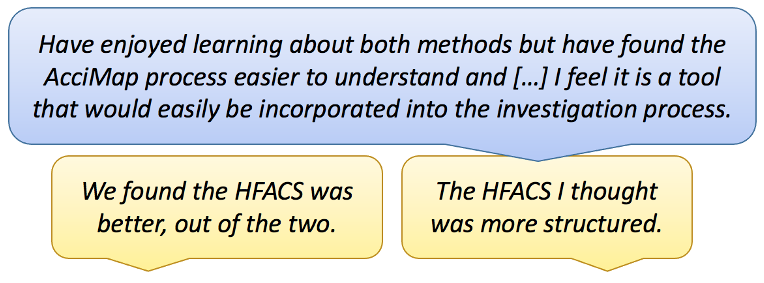
Fig.5 General comments about the tools
The participants had little knowledge of human factors, systems thinking or the tools prior to the training, and yet with minimal training, they were able to apply the tools, identify contributory factors and consider areas for change. Whilst the tools may not have been applied consistently, they gained the most benefit, not from constructing an AcciMap, but from the discussions that were generated by undertaking the process together.
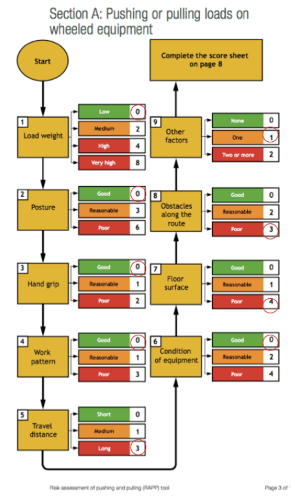
Fig.6 RAPP tool to assess hazards of moving healthcare records
Undertaken as part of the module on Human Function, I evaluated the 'work' being done by the coders who transported notes across the hospital site to an outside building to code each episode of care before returning the notes to the medical records department situated in the basement of the main hospital building. Since this project, the coding team have been relocated next to the Medical Records department.
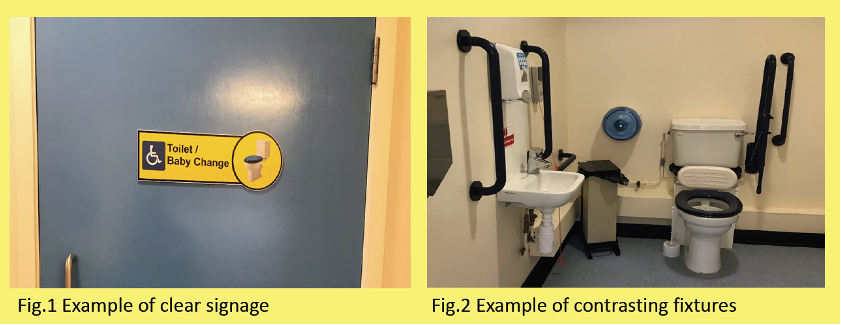
Fig.7 Images of contrasting signage and fixtures for patients with sensory impairment
Undertaken as part of the module on Disability, Ageing and inclusive design. The project looked at accessibility issues for patients in the physical environment of the hospital through PLACE assessments and compliance with the Accessible Information Standards. Since completing the work the Trust has begun work with a colour-coded wayfinding system; introduced QR codes to link to audio leaflets, and embraced technology to deliver 'virtual' appointments to reduce the need for patients to attend in person.
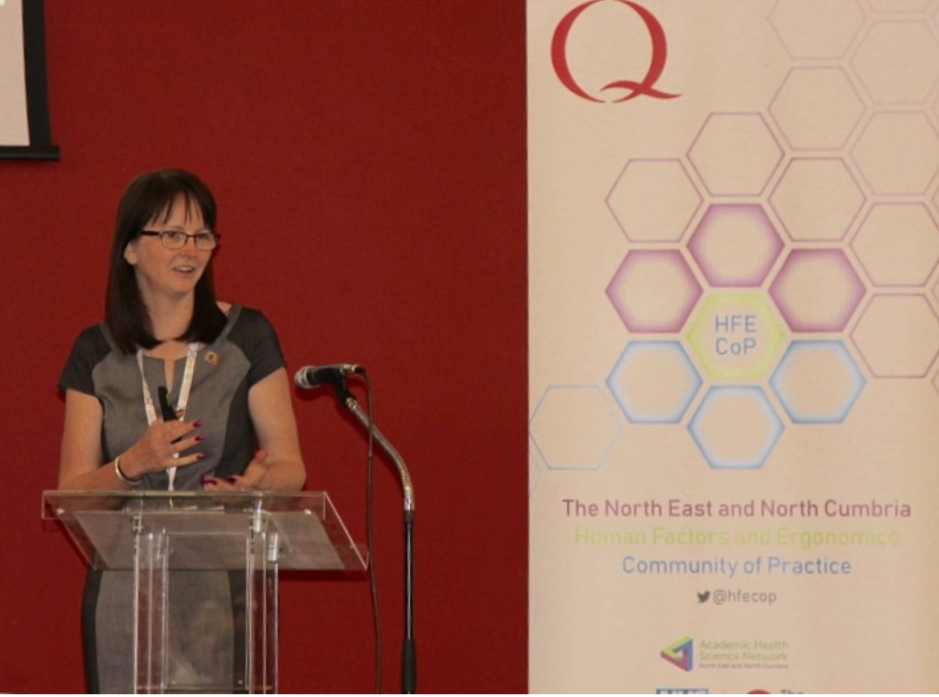
Fig.8 Presenting at the 'Mind the Gap' event in Durham in November 2019
Since beginning my degree I have taken over leading the North East and North Cumbria Human Factors and Ergonomics Community of Practice (@hfecop) which together with support from the Academic Health Science Network for the North East and North Cumbria (AHSN NENC) and funding from Q, delivered a one-day conference on Human Factors in November 2019 including expert keynote speakers from across the country.
Wendy Halliburton
As a Patient Safety Specialist in healthcare, I have embraced human factors and systems thinking into my everyday work, in particular promoting a systems approach to incident investigation and identification of areas for change.
Major project
Systemic Accident Analysis Methods for Healthcare: utility, usability and future application